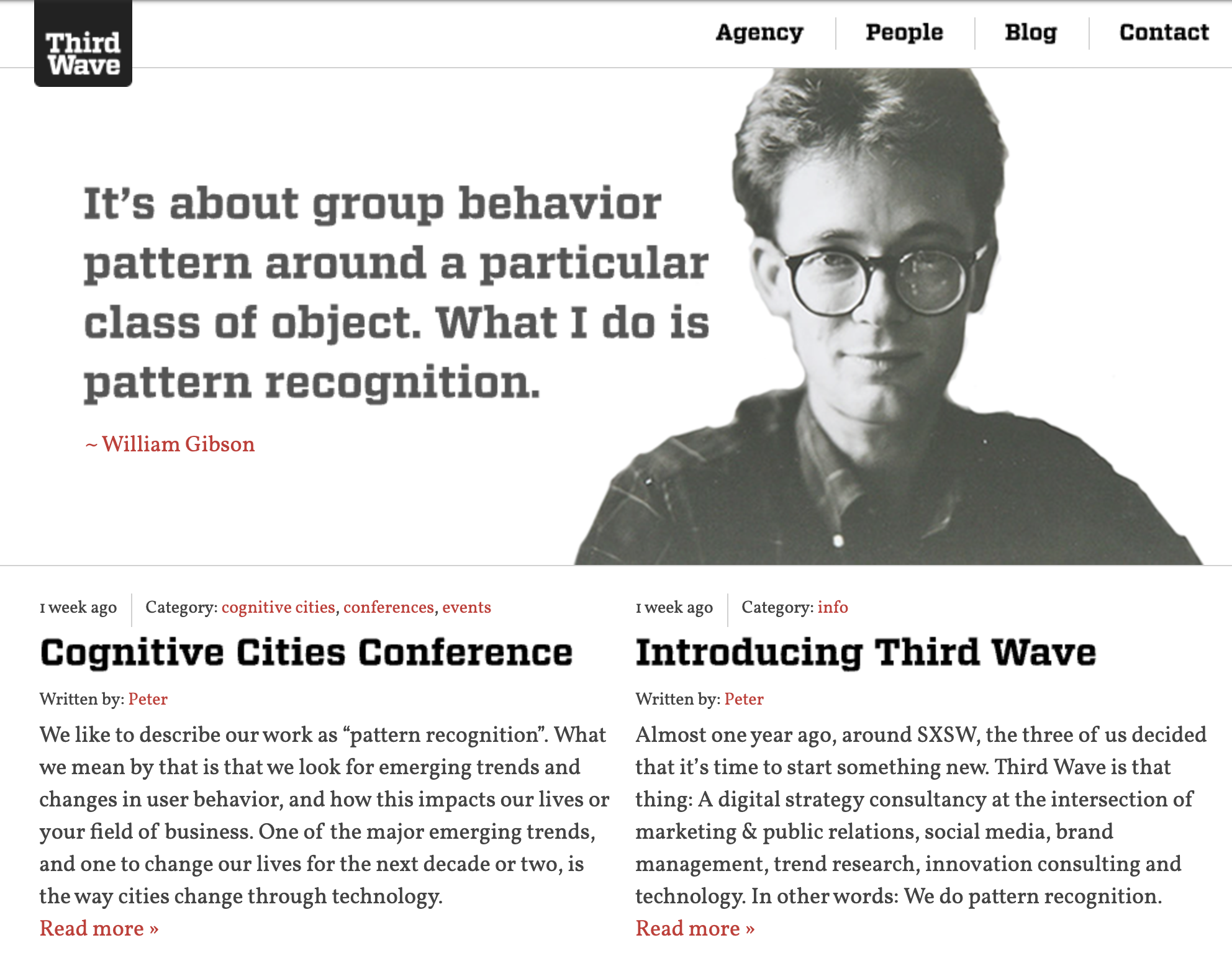Pattern recognition
The first book by William Gibson in his Blue Ant Trilogy
“It’s about a group behavior pattern around a particular class of object. What I do is pattern recognition. I try to recognize a pattern before anyone else does.”” (William Gibson, Pattern Recognition)
“Homo sapiens are about pattern recognition, he says. Both a gift and a trap.” (William Gibson, Pattern Recognition)
““We have only risk management. The spinning of the given moment’s scenarios. Pattern recognition.”” (William Gibson, Pattern Recognition)
“Cayce has a concern for things that transcend fashion, that remain good for a hundred years and would fit in anywhere just because they’re well designed and well made. I believe in design. I don’t believe in fashion. There are a lot of places where those two modes overlap but for me they’re very separate. There’s a company in Scotland that makes lovely jackets-I have a couple. The company’s motto is “never in fashion, never out of style.”” (Patrick A. Smith, Conversations With William Gibson)
What makes the characters special?
I had some fun “talking” to Claude about Cayce and Bigend (s. below):
“Cayce’s success is largely due to her ability to straddle multiple worlds - the corporate and the countercultural, the physical and the digital. Her sensitivity, far from being just a quirk, becomes a powerful tool in understanding and predicting the ebb and flow of cultural trends in a globalized, brand-saturated world.”
“Bigend embodies Gibson’s idea of a post-national, post-modern corporate leader – someone who thrives on chaos and uncertainty, seeing them as opportunities rather than obstacles. His success stems from his ability to synthesize disparate pieces of information into coherent strategies, often operating in the liminal spaces between established industries and emerging possibilities.”
About the future and the present
“For us, of course, things can change so abruptly, so violently, so profoundly, that futures like our grandparents’ have insufficient ‘now’ to stand on. We have no future because our present is too volatile.”” (William Gibson, Pattern Recognition)
““The future is there,” Cayce hears herself say, “looking back at us. Trying to make sense of the fiction we will have become. And from where they are, the past behind us will look nothing at all like the past we imagine behind us now.”” (William Gibson, Pattern Recognition)
By the way
When we founded Third Wave in 2010, we put a quote from the book on our website. And to this day, the simplest way to describe what I’m doing, is ‘pattern recognition’:

The main character in the book is Cayce, a coolhunter, who does pattern recognition to find trends and developments. Here’s what the book says about that:
Reading Material
- Podcast about Pattern Recognition by Edward Rathke & Jay Springett
- Interview with Gibson for the release of Pattern Recognition
- William Gibson’s Pattern Recognition and the Return of History from C21 Literature: Journal of 21st-Century Writings
- William Gibson’s Pattern Recognition: Finding Human Agency in a Commodified Techno-Culture
- Global War, Global Capital, and the Work of Art in William Gibson’s “Pattern Recognition” from Contemporary Literature Journal
- From Cyberspace to Corporate Culture: Analyzing Blended Identity in Pattern Recognition by William Gibson
- Fear and Loathing in Globalization by Fredric Jameson